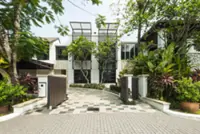Veritas Design Group founder and president David Mizan Hashim
“IT’S tough to make predictions, especially about the future”.
This idiosyncratic quote by American baseball legend Yogi Berra came to mind when I was asked for my perspective on what’s in store in 2023 and beyond for the architectural design and real-estate development sectors in Malaysia.
Already a subscriber? Log in
Save 30% OFF The Star Digital Access
Cancel anytime. Ad-free. Unlimited access with perks.





